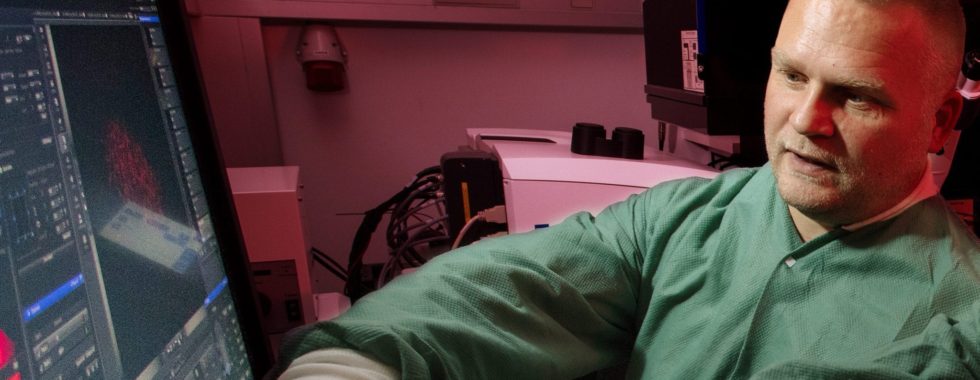Start-up healing wounds in innovation district
Wounds that just will not heal are a major source of suffering. A start-up company based with Copenhagen Science City-partner SUND Hub invented a device that seems to close chronic wounds. Co-locating with researchers, infrastructure and incubation facilities in the innovation district helped them develop their curative contraption. By Jes Andersen.
From ancient bacteria to novel technology
Janus Beierholm is the founder of Vulcur MedTech which is a medical device development company focusing on wound healing. His background is in biochemistry with a focus on the weird strains of bacteria found in hot springs known as archeobacter. This interest led him on to chronic wounds, and he found a field with desperate needs, says Beierholm.
“Almost one in twenty of these patients end up having limbs amputated. When you witness suffering of this magnitude, you cannot just pass on by. If there is any chance I can contribute to a solution, I have to at least try”, says Beierholm.
Little known about underlying cause
Every year more than 6, 5 million patients are diagnosed with chronic wounds in the US alone. These are defined, as wounds that do not heal within three months and very little is known about their underlying cause. A favourite theory though, is that bacteria deeply imbedded in the wound tissue cause them. That is where Vulcur comes in.
Kills bacteria with bubble of energy
Beierholm and his team invented a device that kills bacteria with a bubble of energy, a highly localized plasma bubble, inside the tissue. The method involves lasers and optics, and requires no penetration of the skin. This is highly novel and in early 2018 Vulcur managed to prove the concept on artificial wounds. Getting to that stage took some doing though.
Laser dissection of artificial wounds
The start-up built artificial wounds of actual human tissue, bacteria and cultured cells. Apart from Janus Beierholm, the Vulcur team consists of a medical student, a student of laser physics and a student of optics. They knew next to nothing about cell culturing, laser dissection or microscopy. Fortunately, they found help at various institutes at the University of Copenhagen.
Hubfather introduced helping programmes
Start-up companies need all the help they can get, and student start-ups are no exception. In SUND Hub Vulcur found an enthusiastic champion in “hubfather” Martin Justesen. He introduced the team to Copenhagen Business Schools “Go Grow”-programme, a four-month accelerator course, where the start-up were enrolled in mid 2018. He also persuaded them to enrol in the Danish “Venture Cup”-competition which they won in June 2018.
“Fortunately we were able to return to SUND Hub after our time at Go Grow. We have been introduced to a sea of opportunities there, but sometimes the best thing is just to have an optimistic and energetic guy like Martin to pat your back”: Janus Beierholm, CEO, Vulcur.
Finding the right questions to ask
Vulcur still has the hardest climb ahead of them. Currently they are preparing for the clinical trials of their product. Although their device does not puncture the skin, it still works inside the body. This is a hard category to get approval for, and the team is preparing well.
“None of us has tried this before, so right now we don’t even know which questions we need to ask. We hired an intern to map how these trials are supposed to go. Later this year we will join doctors and nurses at a clinic specialised in wound-healing. Combined, we hope these efforts will prepare us to create a protocol for a successful clinical trial”, says Janus Beierholm.
Bigger exit will help more patients
Ultimately, Beierholm and the Vulcur team hope to sell their invention to the largest possible medicotechnical company. Not because that is where they are most likely to make a profit, though it is. More because such a company could distribute their method to the largest number of patients, says Beierholm.
“We are fairly confident that our method could halve the healing time for normal chronic wounds, close two thirds of the most difficult wounds and avoid up to half the wound-caused amputations. If this is true, we have an obligation to make the method available to as many sufferers as possible”: Janus Beierholm, CEO, Vulcur.




